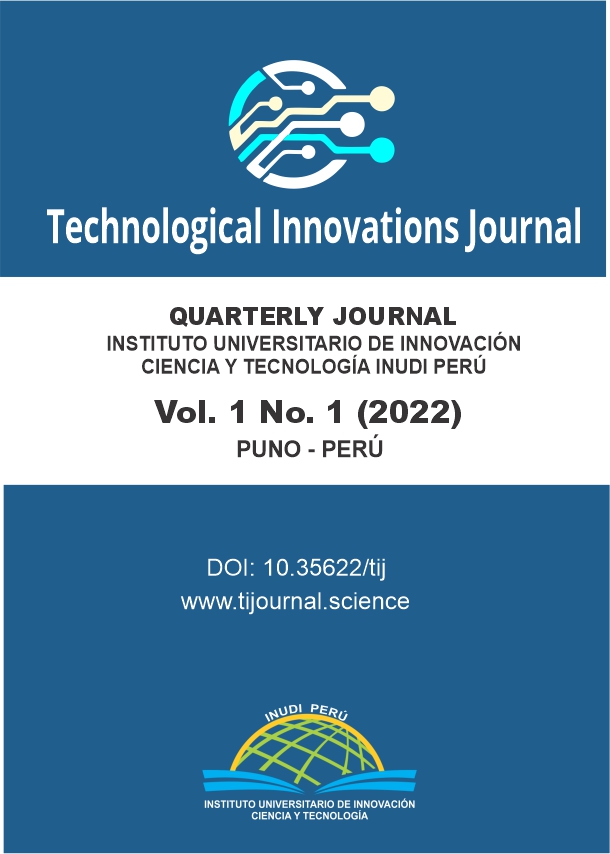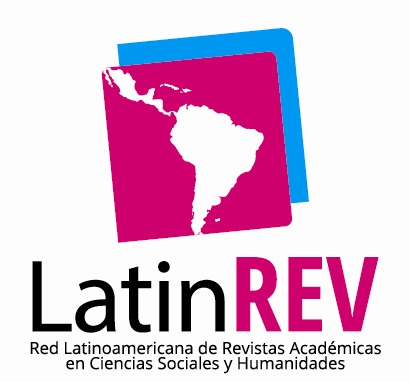Yield and physicochemical characterization of coriander essential oil extracted by steam entrainment in a modular equipment
DOI:
https://doi.org/10.35622/j.ti.2022.01.003Keywords:
coriandum satuvim, essential oil, steam entrainment, gas chromatographyAbstract
This work presents a study of the physicochemical characterization, compounds of the essential oil of coriander (coriandrum sativum) and the yield extracted by steam dragging. For this purpose, gas chromatography was chosen, the determination of the variables that influence the extraction and the evaluation of the yield of coriander essential oil. The extraction process was carried out by steam dragging, where the following parameters were analyzed: amount of raw material, water flow and time. In order to obtain the best yield of essential oil extraction. For the results, the 23 factorial design was used without repetitions, thus obtaining the best result, giving us the optimal yield 0.07625% (1.1 ml) of 4.0 kg of the coriander sample under the following conditions: Water flow 150 L/h and at a time of 120 minutes, according to the physicochemical characterization, density 0.9400 g/mL, refractive index 1.513, acidity index 4.29% and peroxide index 0.84 meq/kg, likewise, it was found to contain Aromatic compounds: Nonyl acetate (15.70%), n-decanal (15.13%), trans-2-octenal (13.23%), lauric aldehyde (5.08%), linalool (1.58%) , trans-2-nonenal (1.12%), geraniol (0.08%). It is concluded that time influences the extraction of the raw material. In the case of the quantity and flow of water, there is an influence on the extraction of oil, however, these are not significant, verifying that it does contain aromatic chemical compounds.
References
Anitescu, G., Doneanu, C., & Radulescu, V. (1997). Isolation of coriander oil: Comparison between steam distillation and supercritical CO2 extraction. Flavour Fragr. J., 12(6), 173. DOI: https://doi.org/10.1002/(SICI)1099-1026(199705)12:3<173::AID-FFJ630>3.3.CO;2-T
Burt, S. (2004). Essential oils: Their antibacterial properties and potential applications in foods-a review. Food Microbiol, 94, 223-253. DOI: https://doi.org/10.1016/j.ijfoodmicro.2004.03.022
Cantore, P. L., Iacobellis, N. S., De Marco, A., & Capasso, F. (2004). Antibacterial activity of Coriandrum sativum L. and Foeniculum vulgare Miller Var. vulgare (Miller) Essential Oils. Food Chem., 52, 7862-7866. DOI: https://doi.org/10.1021/jf0493122
Cardenas, E. (2014). Determinación de parámetros de operación para la destilación por arrastre con vapor de agua del aceite esencial de molle (Schinus molle Linneo) en el equipo modular de extracción .de aceites esenciales de la fiqm • UNSCH (Universidad Nacional San Cristobal De Huamanga).
Escobar, A. N., Molina, C. E., & Zapata, G. A. (2012). Comparación de la actividad acaricida entre Ocimum basilicum, Coriandrum sativum y Thymus vulgaris contra el ácaro Tetranychus urticae. Universidad Politécnica Salesiana.
Fernandez, O. (1989). Prueba de adaptacion, estimacion de parámetros geneticos y correlacion en 12 genotipos de cilantro (Coriandrum sativum L.). UAAAN.
González, E. (2017). cilantro (Coriandrum sativum L.) un cultivo ancestral con potencial sub-utilizado. México.
Granados, C., Yánez, X., & Santafé, G. (2012). Evaluación de la actividad antioxidante del aceite esencial foliar de Calycolpus moritzianus y Minthostachys mollis de Norte de Santander. Bistua: Revista de la facultad de Ciencias Básicas, 10(1), 12-23.
Hernández, J. (2003). Crecimiento y desarrollo del cilantro Conandrum satívum L. Por efecto del fotoperiodo y la temperatura y su control con fitoreguladores (Universidad Autónoma de Nuevo León). Recuperado de http://eprints.uanl.mx/5784/1/1020148421.PDF
Lawrence, B. M. (1993). A planning scheme to evaluate new aromatic plants for the flavor and fragrance industries in new Crops (J. Janick & J. E. Simon, Eds.). New York.
Leal, E., López-Malo, A., & Sosa-Morales, M. E. (2013). Extracción, composición y caracterización de los aceites esenciales de hoja y semilla de cilantro (Coriandrum sativum). Temas Selectos de Ingeniería de Alimentos, 7(1), 97-103
Loaysa, N. (1998). Extracción de aceite esencial de eucalipto con fines farmacéuticos. Universidad Nacional San Antonio de Abad del Cusco.
Martínez, A. (2001). Aceites esenciales (Universidad De Antioquia). Recuperado de http://www.med- informatica.com/OBSERVAMED/Descripciones/AceitesEsencialesUdeA_esencias 2001b.pdf
Morocco, S. (2017). Caracterización micro-histologico, físico y químico del aceite esencial de las hojas de matico (Piper aduncum), extraido por arrastre de vapor en un equipo modular (Universidad Nacional del Altiplano). Recuperado de http://www.repositorio.unap.edu.pe
Msaada, K., Hosni, K., Taarit, M. B. E. N., & Ouchikh, O. (2009). Variations in essential oil composition during maturation of coriander. 33, 603-612. https://doi.org/10.1111/j.1745-4514.2009.00240.x DOI: https://doi.org/10.1111/j.1745-4514.2009.00240.x
Murillo, E., Fernández, K., & Sierra. (2004). Caracterización Físico-Química Del Esencial De Albahaca. II. Revista Colombiana de Química, 33(2), 139-148.
Organización Internacional de Normalización. (1998). Aceites esenciales-determinación del índice de refracción.
Punina, P., Danilo, F., & Chicaiza, Q. (2010). Desarrollo de un sistema de extracción de aceites esenciales. Escuela Superior Politécnica De Chimborazo.
Q & G (2009). Ensayo preliminar de la actividad antibacteriana de extractos de Allium sativum, Coriandrum sativum, Eugenia vulgaris frente a Clostridium perfringens. Biosalud, 8(1), 47-57.
Ramadan, M.F., Amer, M.A.A., and Awad, A. E. (2008). Coriander (Coriandrum sativum L.) seed oil improves plasma lipid profile in rats fed a diet containing cholesterol. Food Res, (227), 1173-1182. DOI: https://doi.org/10.1007/s00217-008-0833-y
Wangensteen, H. Samuelsen, A.B. Malterud, K. E. (2004). Antioxidant activity in extracts from coriander. Food Chem, 88, 293–297. DOI: https://doi.org/10.1016/j.foodchem.2004.01.047
Yánez M, P., Escoba, A., Molina, C., & Zapata, G. (2014). Comparación de la actividad acaricida de los aceites esenciales de Ocimum basilicum, Coriandrum sativum Y Thymus vulgaris contra Tetranychus urticae. La Granja, 19(1), 21. https://doi.org/10.17163/lgr.n19.2014.01 DOI: https://doi.org/10.17163/lgr.n19.2014.01
Published
Issue
Section
License
Copyright (c) 2022 Mercy Condori, Gregorio Palomino (Autor/a)

This work is licensed under a Creative Commons Attribution 4.0 International License.











